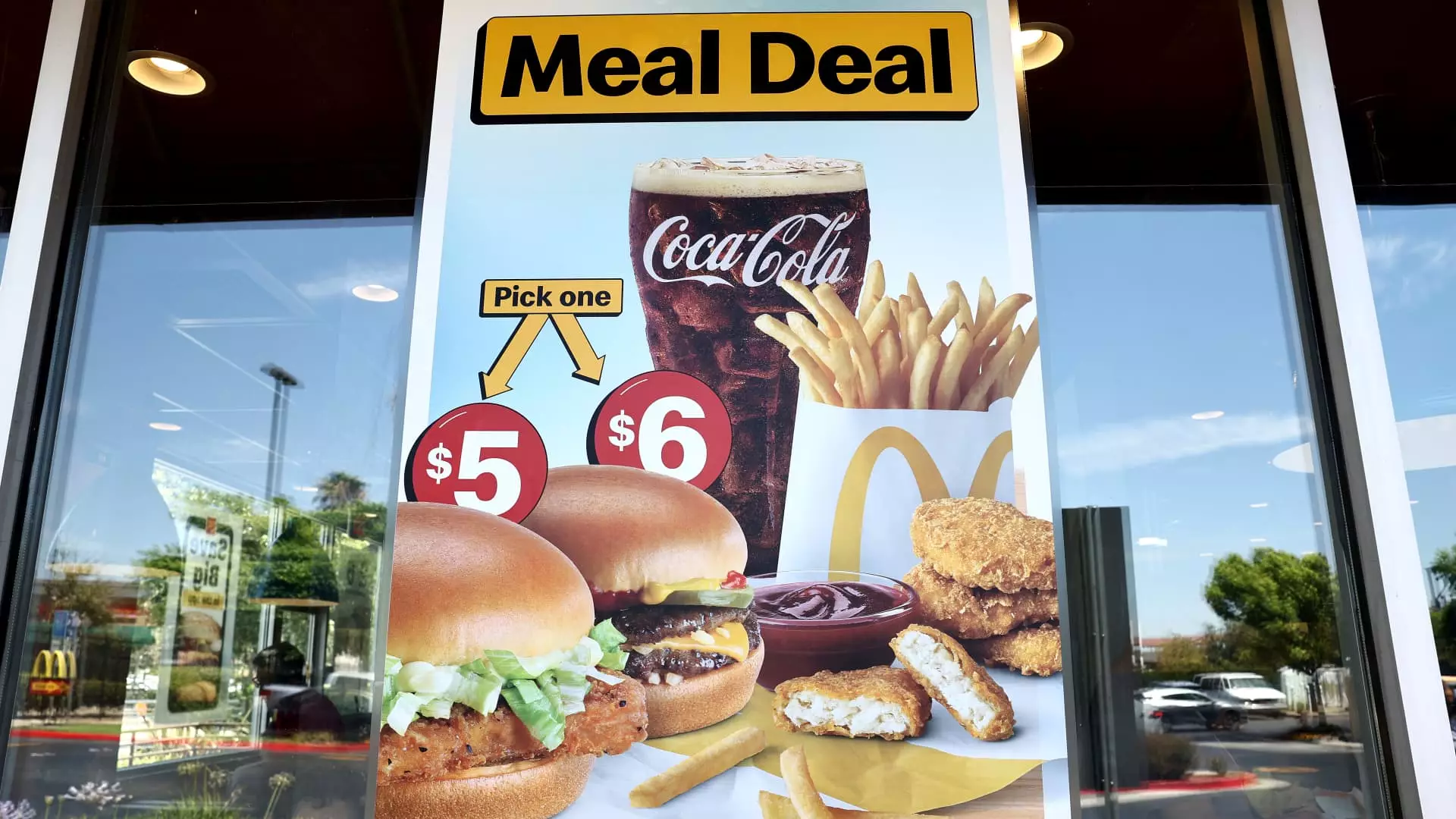An interesting shift has been occurring in the fast-food industry, as chains like McDonald’s, Taco Bell, Burger King, and Wendy’s have brought back $5 meal deals to attract customers in a time of economic uncertainty. With many consumers cutting back on spending, these chains are banking on the appeal of a value meal to drive traffic and boost sales.
Recent years have seen fast-food prices steadily increasing, causing customers to perceive these offerings as less of a good deal. In response to the steady price hikes, over 60% of respondents in a recent LendingTree survey indicated that they have reduced their fast-food spending due to the perceived expense. This trend has particularly affected low-income customers, a significant portion of the fast-food consumer base.
A Shift in Consumer Behavior
The changing consumer sentiment has led to a shift in market dynamics, with casual-dining chains like Chili’s seizing the opportunity to emphasize their value offerings compared to traditional fast food. This move has allowed casual-dining establishments to capture market share from fast-food competitors, highlighting the industry-wide struggle to retain budget-conscious customers.
Investors are also feeling the impact of changing consumer preferences, with major fast-food stocks like McDonald’s and Burger King facing double-digit declines in share prices. The anticipated second-quarter results for many of these chains are expected to disappoint, reflecting the broader struggle to adapt to evolving customer demands.
Franchisees, who are on the front lines of implementing these value meal deals, have also expressed skepticism about the long-term sustainability of discount strategies. With many franchisees now wielding more influence and pushback power, parent companies like McDonald’s are facing resistance to their promotional plans. Franchisees are increasingly concerned about the impact of discounts on their profits, complicating efforts to drive sales growth through value meals.
As the fast-food landscape continues to evolve, chains must navigate the delicate balance between attracting budget-conscious customers and maintaining profitability. The success of $5 meal deals hinges not just on increasing foot traffic but also on converting deal-seeking customers into higher-ticket purchasers. Without careful execution, these promotions risk eroding profits and contributing to a race to the bottom in pricing strategies.
The resurgence of $5 meal deals in the fast-food industry reflects a broader battle for the budget consumer. As chains grapple with shifting consumer preferences, fierce competition, and the challenges of franchisee resistance, the path forward remains uncertain. Adapting to these changing dynamics will require innovative strategies that balance value for customers with sustainable profitability for operators.


Leave a Reply